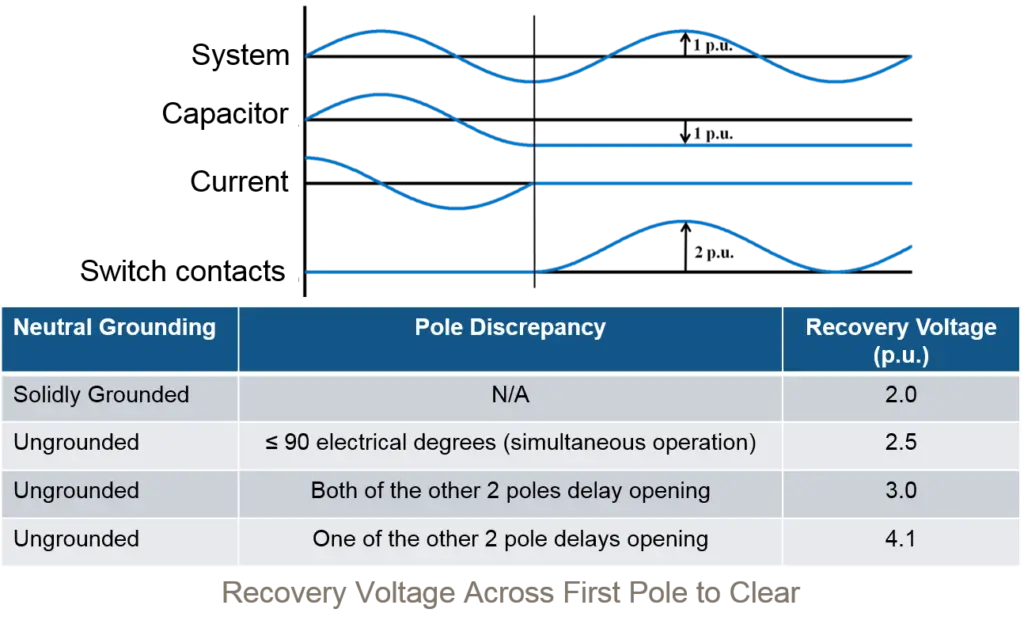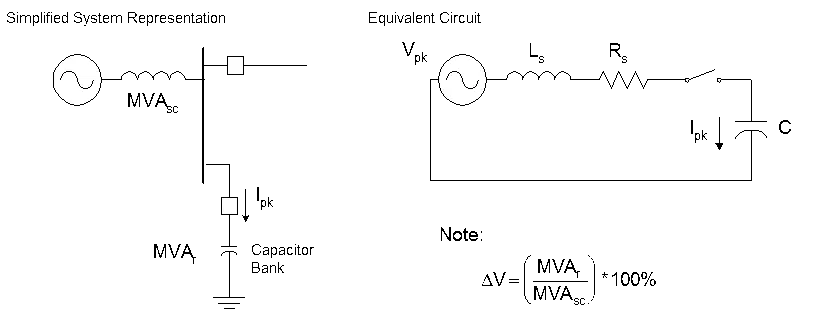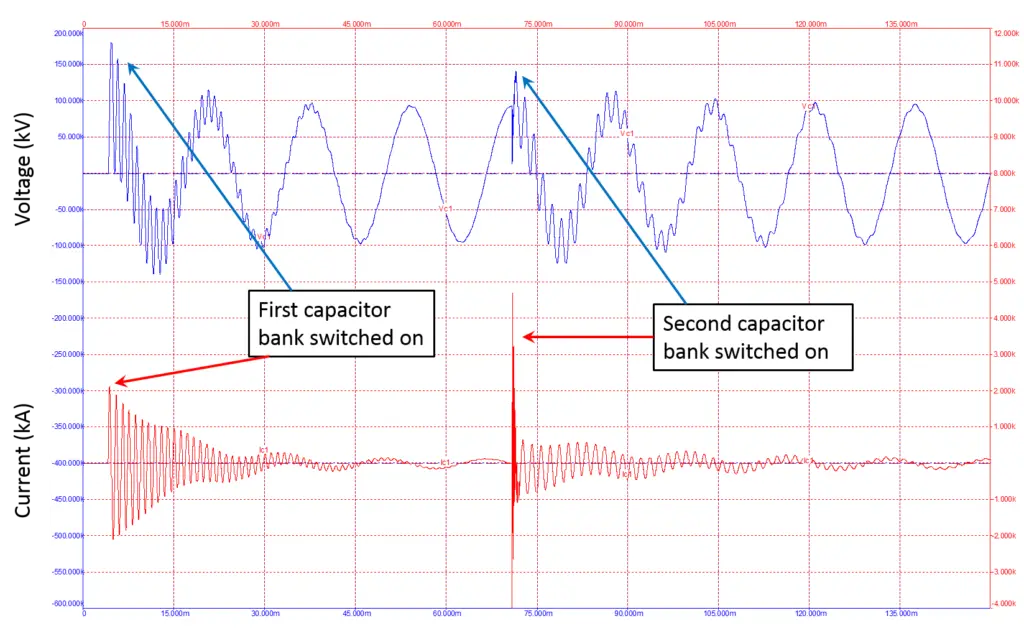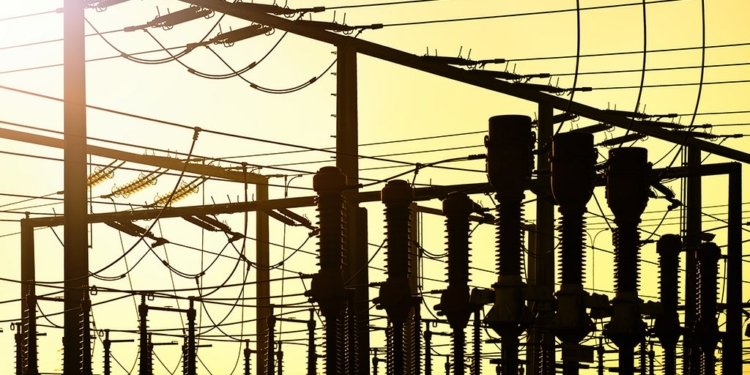Source: T&D World article
by: Southern States. High power transmission reliability considerations when switching capacitor banks. Minimize or eliminate restrikes when de-energizing capacitor banks.
Restrikes or re-ignitions occur when the dielectric strength of the open gap, during contact parting, is not great enough to withstand the recovery voltage across the open gap. With a capacitive load, the current waveform leads the voltage waveform by 90°. The current is interrupted close to the zero crossing when the voltage is at its maximum value. The supply side voltage is relatively unaffected following the interruption, but the voltage of the capacitor bank becomes trapped maintaining the peak voltage level (very low rate of decay) that was present at the time of current interruption.The initial low rate of rise of the recovery voltage and the low level of current being switched make it easy for the switching device to interrupt.
Since the level of the currents being switched are low, the switching device, which is often a general purpose device such as a power circuit breaker or vacuum interrupter, may interrupt the current at a point where the contact separation and parting speed is not sufficient to withstand the voltage difference across the contacts leading to a restrike and the resumption of current flow. Single restrike overvoltages can approach 3 PU.

Restrikes cause cascading overvoltages that can lead to: Ruptured capacitor cans, Blown Fuses, Failed Arrestors, External equipment flashovers, and contact wear that may lead to interrupter dielectric failures.
Minimize Voltage and Current Transients when Energizing capacitor banks
When a capacitor bank is energized, there is an immediate drop in system voltage toward zero, followed by a fast voltage recovery that is superimposed on the system 60 Hz fundamental waveform. This recovery voltage can reach a peak of 2.0 p.u. at frequencies between 300 Hz and 1000 Hz.

While these transients are not typically harmful to utility equipment, they may be troublesome to some customers’ sensitive equipment. The transients often show up a significant distance from the capacitor bus as the high frequency transients pass through transformers and are magnified by capacitor banks located on the distribution system or the at the customers location. The resulting over-voltages can cause nuisance tripping of adjustable speed drives, computer network problems, as well as customer equipment damage or failure. It is generally accepted that transients maintained below about 1.2 p.u. will not impact the customer. Some form of control is necessary to achieve this performance.
When capacitor banks are installed in a back-to-back arrangement (two or more capacitors close to each other), the energization of the second bank looks like a short circuit to the first bank. This causes the first capacitor bank to discharge into the second capacitor bank resulting in high inrush currents. These in-rush currents can reduce the life of the capacitor switching device. On grounded capacitor banks, transient currents may flow in the ground mat causing potential problems with electronic equipment in the substation because of induced voltage in the control voltage supply.


A Special Purpose Solution for Switching Capacitor Banks
The use of a product designed specifically for an application is often the most economical and effective solution. This holds true when switching shunt capacitor banks, as the use of general purpose switching devices, often requiring the application of arrestors, inrush reactors, POW Switching controls, or pre-insertion inductors, can potentially affect performance efficiency, cause increased maintenance and reduce cost effectiveness.
Utilizing closing resistors to minimize voltage transients and inrush currents has become a widely accepted methodology for effective and reliable capacitor bank switching. One field proven approach, developed by Southern States, has been the use of a two-stage switching device, which momentarily introduces an inductance into the circuit, along with an interrupter designed specifically for interrupting capacitive currents.


































